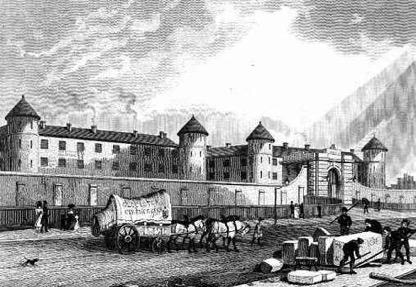(click on heading to leave comments at bottom of page)
As I said a few days back, I was going to come back to the writing of ‘Downfall’ ….
Having decided to write Robert’s and Mary Ann’s story, I began the steps of collecting information and digging into the records. I initially thought that it would take me perhaps a year to complete the research and write the book but, like most projects, it took much longer. The first critical information, of course, was to track down those records in existence to identify who these two people were and where they came from.

Victoria’s relative, Eleanor Oberg, had provided some information and I started with Robert Bright. Eleanor had found somebody by this name who was born in Cambridge at about the right time but, on digging further and matching different dates to different people I discovered that there was in fact more than one Robert Bright born in the Cambridge area in the early 1800s and that the Robert that Eleanor had found was the wrong person. Also, digging into records held by other organisations, I found out that Robert had a twin brother, Benjamin and, quite recently, found out that he had joined the army and had ended up in India where he was, apparently, killed in battle. He has a number of descendants living in New Zealand.
Anyway, back to Robert. There followed a period of several months ploughing through sites like Ancestry.com and Find My Past.com, convict records in Australia, newspaper items in England and Australia, local records, court records, articles and books and suchlike. In the process I was building up a picture of Robert and his family and finding out more about the times in which he lived. I had never heard of the “Swing” riots before (which I describe in the book and which occurred as Robert was growing up) and I came across ” The Village Labourer 1760 to 1832 by Hammond which is a “wonderful history of the poor in the villages of the period – – – which allows you to understand the hardships and the problems that the ordinary person faced during these times”. Although a lot of this information was not specific to Robert, it was important background colour to understand what his daily life would have been like.
And, of course, there was information very specific to him including information about his parents, his date of birth, christening, siblings, the crime for which he was transported, the court trial, his voyage out to Van Diemen’s Land, his assignment and other facts which I won’t go into here as it’s all available in the book! Some of this came free, a lot of it didn’t but that became somewhat irrelevant as I became engrossed in the subject.
In building up this picture, I began to know him and in a strange way found that the story told itself even though I had initially sketched out a schematic for the book. One thing would lead onto another and the pages accumulated. And I threw away the schematic. The story would lead me where it would and I began to enjoy the journey.
In my next post I’ll talk about the fascinating back story to Mary Ann.
The post Genesis – Robert Bright first appeared on David Cairns of Finavon.